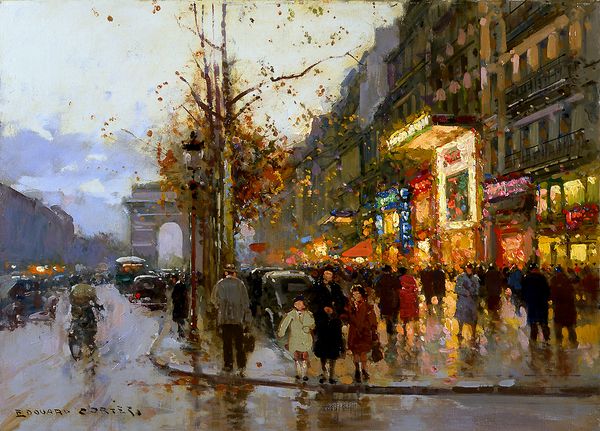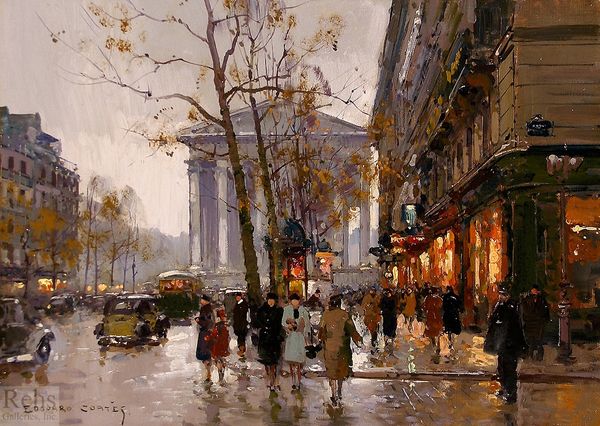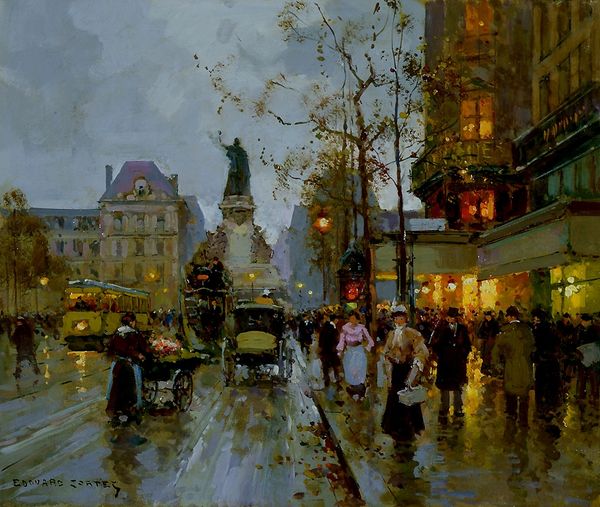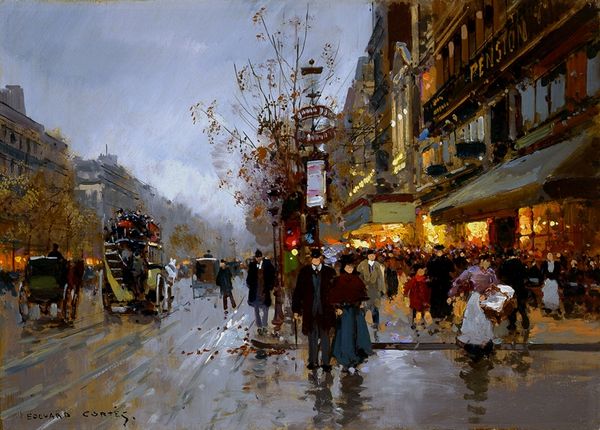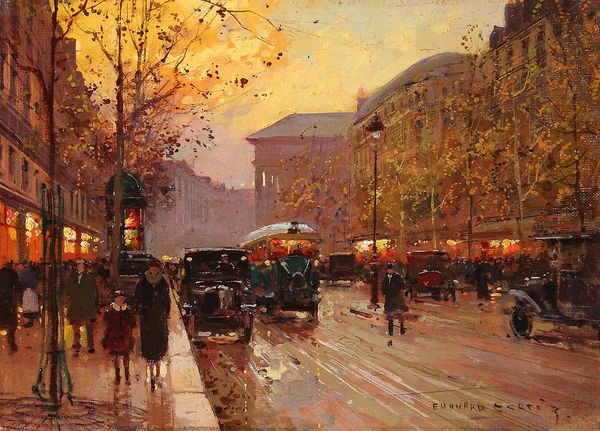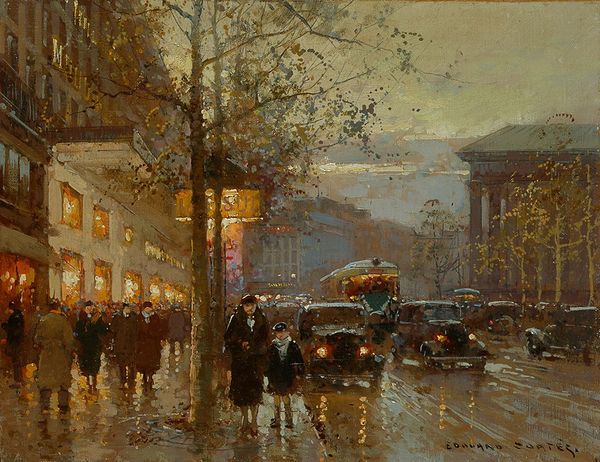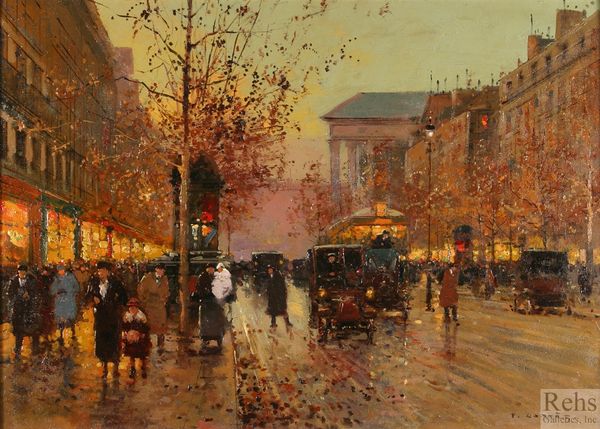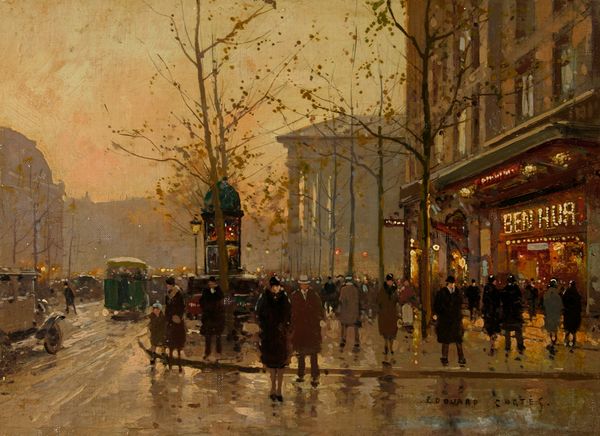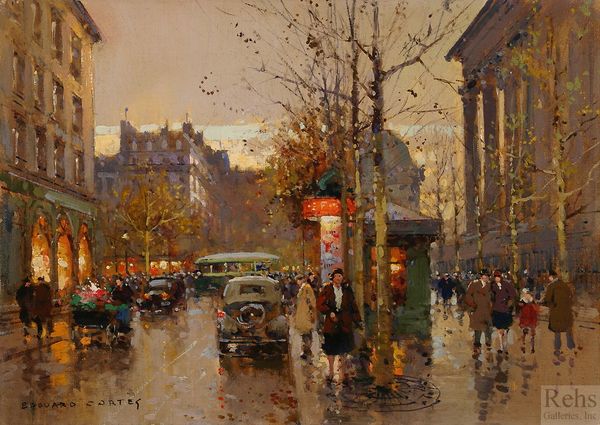
painting, plein-air, oil-paint, impasto
#
portrait
#
baroque
#
painting
#
impressionism
#
plein-air
#
oil-paint
#
impasto
#
romanticism
#
cityscape
#
genre-painting
#
post-impressionism
#
building
Copyright: Edouard Cortes,Fair Use
Curator: We are looking at "In three fourths". While undated, this oil on canvas bears many of the hallmarks of Edouard Cortes’ impressionistic street scenes of Paris. Editor: Mmm, a drizzly day in the city. The mood is somber yet lively. All those hazy figures in muted tones. Feels like stolen moment, like a memory. Curator: Cortes, often called the "Painter of Paris," repeatedly depicted similar cityscapes, capturing the bustling life of the French capital during the Belle Époque and beyond. This work continues dialogues concerning urban modernity. Who are these figures, really, beyond mere representations of bourgeois life? What can we glean about their socio-economic status from dress or comportment? Editor: You know, they all seem slightly preoccupied, almost melancholy. See how the streetlights reflect in the wet pavement? I find that really mesmerizing, it's like a world flipped on its head. But thinking about class… the painting somehow democratizes everyone, makes them part of this shared urban experience. Rich or poor, you’re all just trying to get somewhere on a rainy day. Curator: Perhaps, but that assumed shared experience relies on very particular understandings of who gets to participate, and on whose backs they stand. Considering the political instability in France during Cortes's time, what commentary might we discern about social hierarchies through his chosen subjects, or even omissions? Where are those marginalized in similar depictions, say the working classes that are only shown providing services to others. Editor: True. I still keep circling back to how it makes me feel. I suppose it's escapism – this painterly refuge he creates. A little sad, yes, but also beautiful and dreamlike. It feels almost timeless... despite all the societal pressures that could affect one’s impression. Curator: I find this tension you speak of is precisely where the work finds purchase within contemporary dialogues around historical depictions, power dynamics, and art historical frameworks, forcing consideration beyond simple "beauty." The brushstrokes are lively but measured, creating an image which invites the viewer to really sit with its complex socio-political questions, and thus we understand its staying power today. Editor: Well, that gives me a lot more to consider on my next rainy day.
Comments
No comments
Be the first to comment and join the conversation on the ultimate creative platform.
